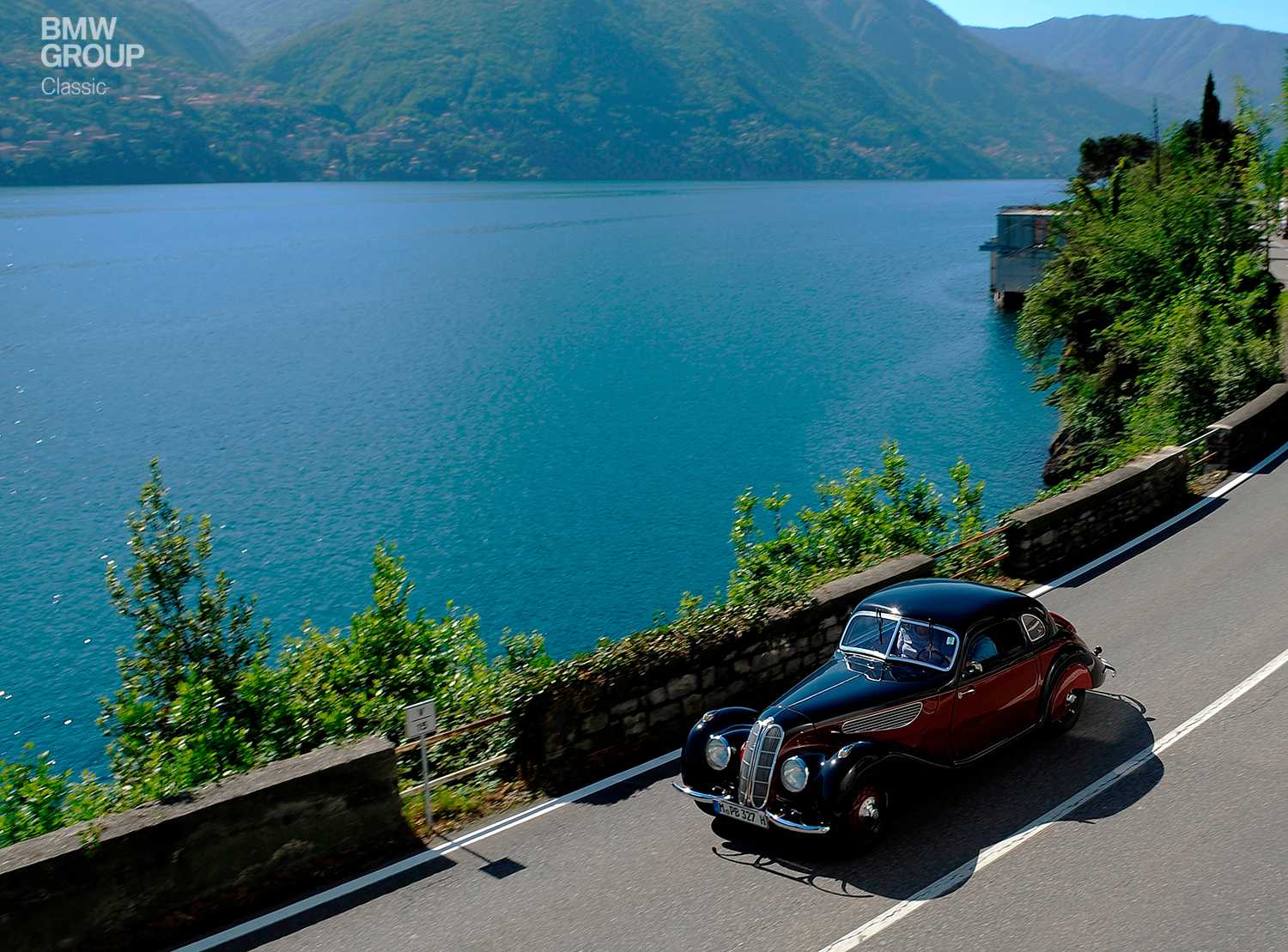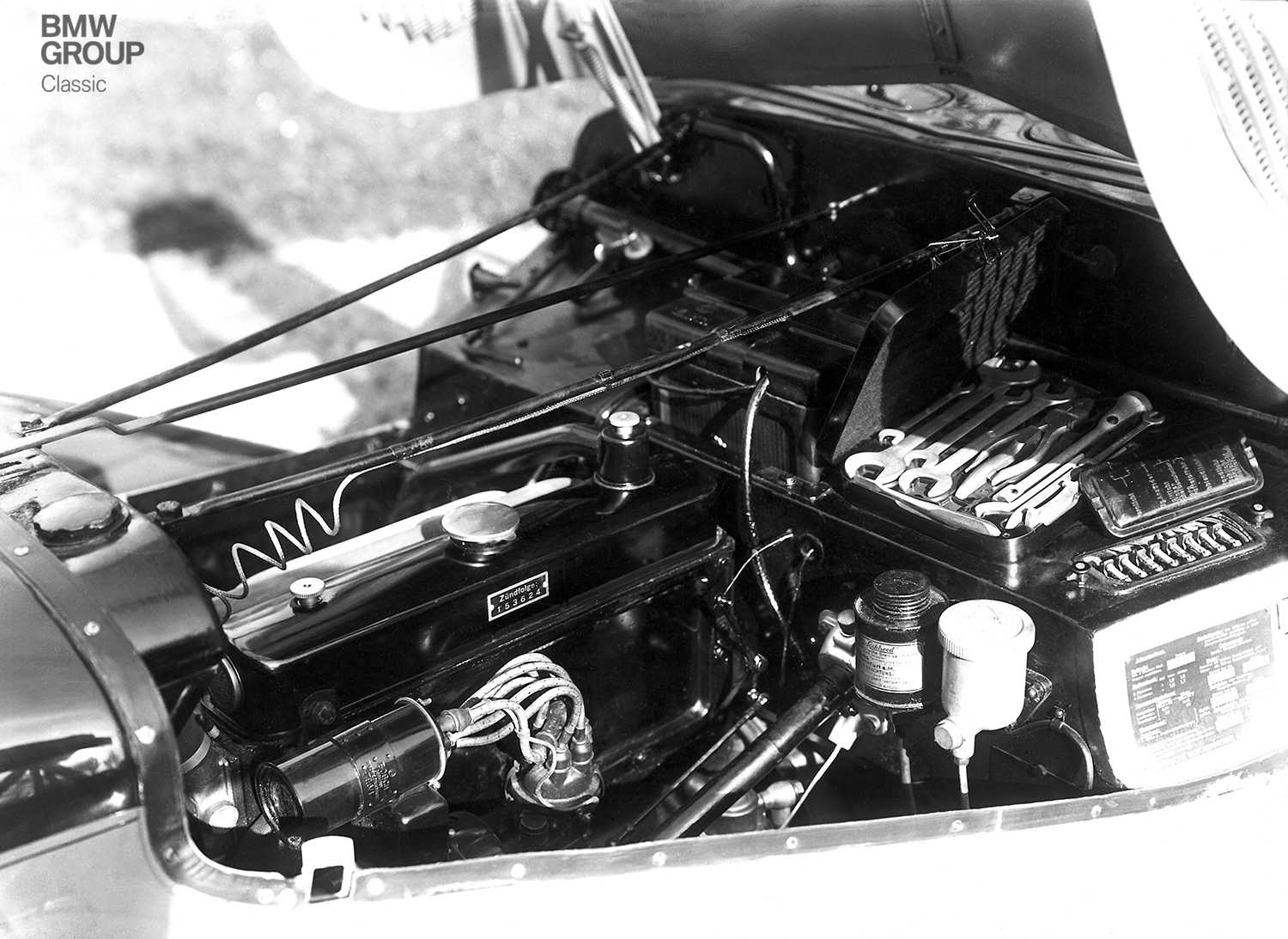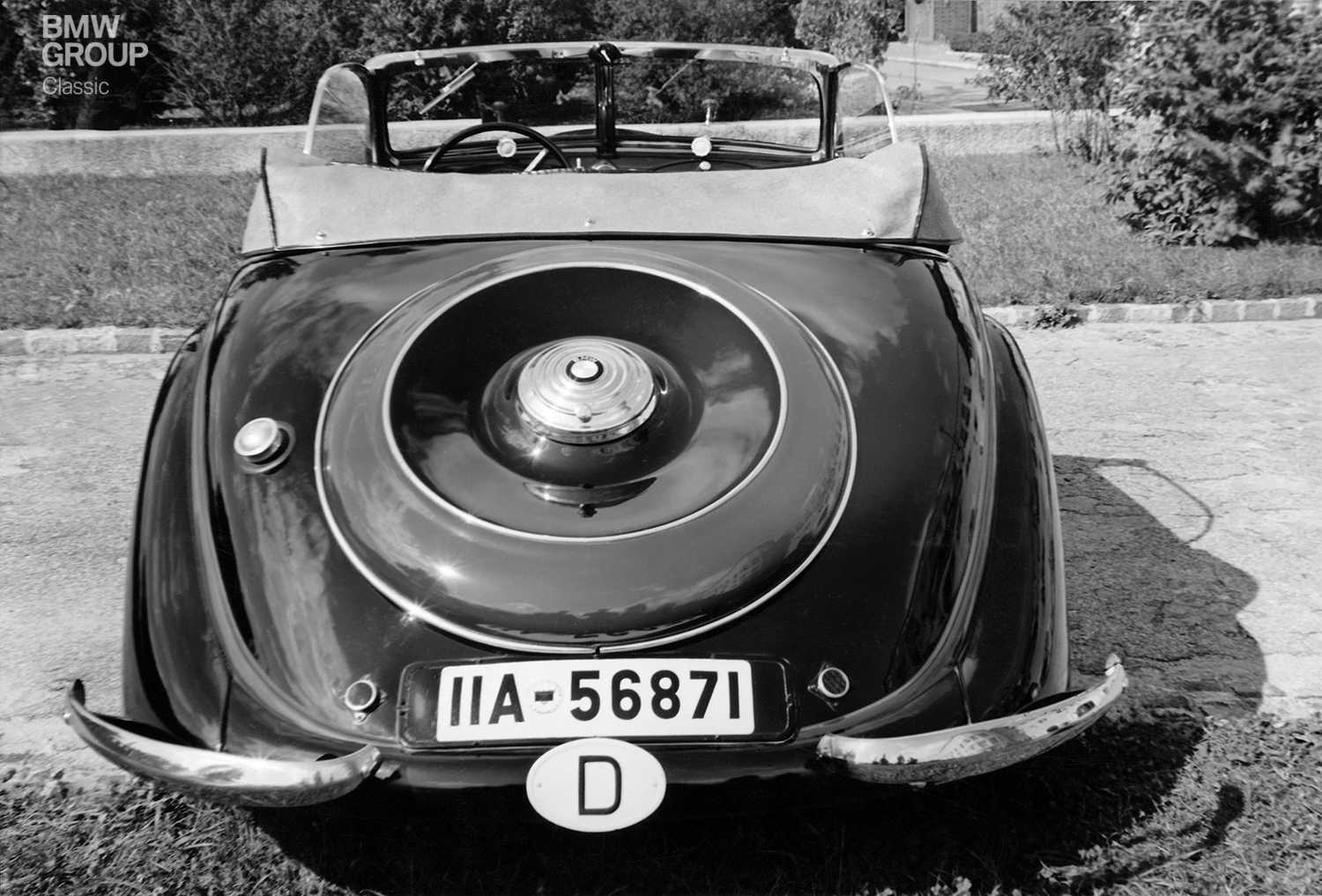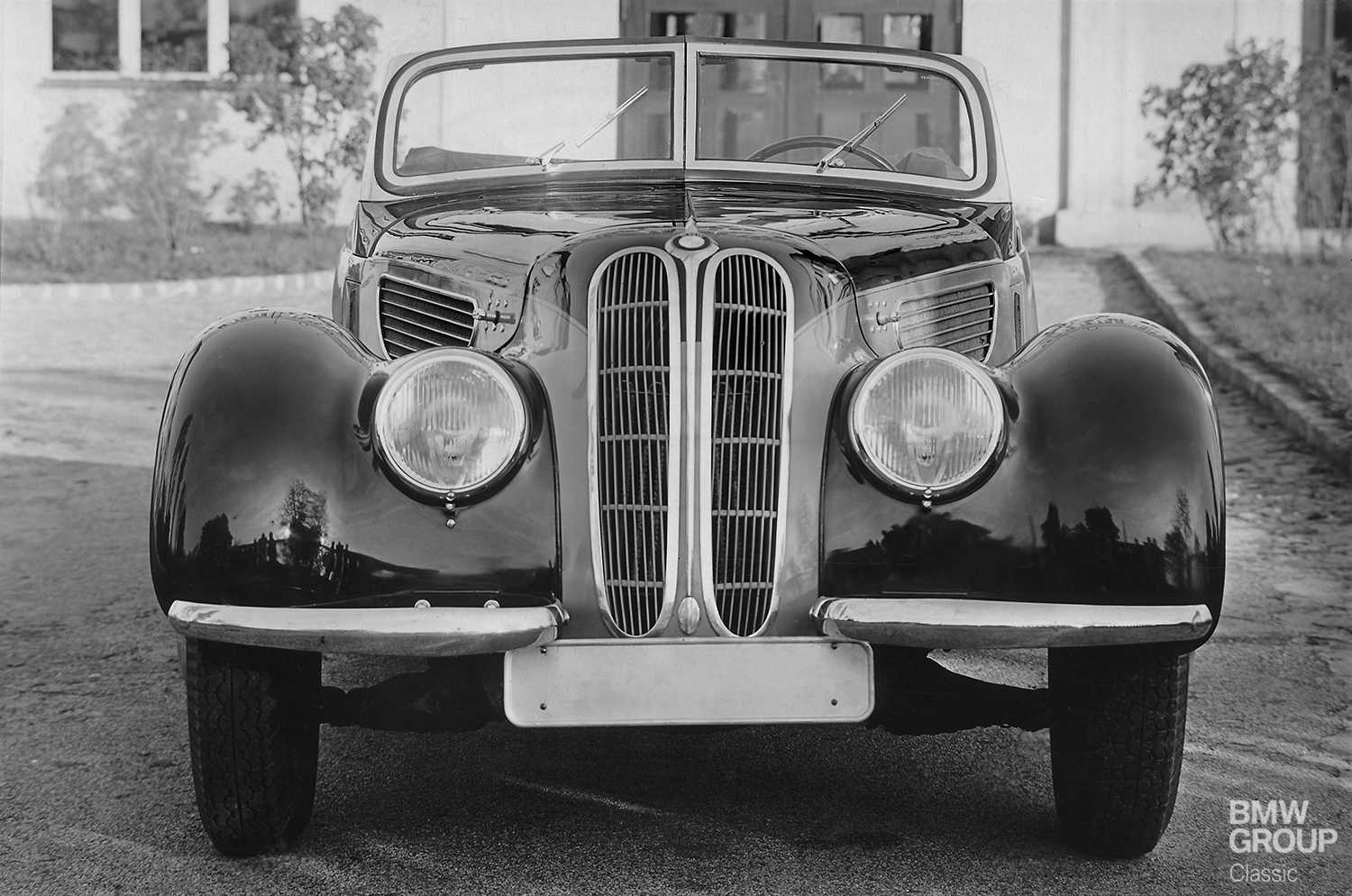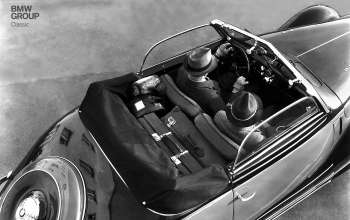When the BMW 327 first stepped into the limelight in 1937, it was greeted by a rapturous welcome. The 327’s low, aerodynamic form oozed speed even before a wheel had turned, while its modern design provided a snapshot of the future. The BMW 327 duly became an iconic example of car design, one which continues to fascinate and enthral a full 80 years later, and which has long since ranked as a rare and highly coveted collector’s item.
In the 1920s, car makers began to row back against the trend for untamed experimentation and artisanal improvisation. The Americans did more than most to showcase how everyday cars could be produced in large numbers and without breaking the bank. This was a time when car design seemed to have hit a ceiling of creativity, the metaphorical stylistic buffers; large or small, the models of the time all looked rather samey. The recipe was thus: a wood/metal body would be lowered onto a chassis, complete with axles and an engine. The front wings and headlights stood apart from the main body, and the bonnet tapered forwards to a radiator that stood up, straight as a rod, against the onrushing air. But new metal-pressing and welding techniques were now making their presence felt, broadening the scope for fresh artistic ideas. At the same time, more powerful engines and newly built high-speed roads demanded improved aerodynamics. The 1930s marked the moment the industry turned its back once and for all on the carriage template and replaced it with a blueprint for modern car design.
Form follows emotions.
The BMW 327 caused a sensation when it was unveiled in 1937 and its impact has since lessened hardly at all. Even when standing still, the 327 appears to be moving, thanks to its powerful, dynamic appearance. Its low-to-the-road body ducked, aircraft-like, through the air, its rounded front end with sweeping air vents and a separate radiator drawing a line under the era of ornamental radiators shaped like Roman temples. Integrated headlights were now en vogue, while a split, angled windscreen cleverly negotiated the nagging problem of how to manufacture glass in curved forms distortion-free. And then there was the smoothly packaged rear end, with covered wheels and an integrated spare tyre stored under a protective lid (whose form was an important part of the overall design). Today, the BMW 327 continues to thrill and delight from every angle, the more so in coupe form; 80 years on, it has lost none of its immense sporting impact.
A majestic six-cylinder.
These may have been relatively early days, but six-cylinder engines had already become a BMW hallmark. Incredibly smooth-running, with torque to spare and the ability to soak up punishment, they did much to stoke the reputation of this still youthful automotive brand. The straight-six in the BMW 327 developed 55 hp from displacement just shy of two litres and propelled the car to a princely 125 km/h (78 mph) – a pace-setting figure at the time. Customers could opt to have their 327 fitted with a Hurth gearbox with freewheel, which reduced revs at high speeds and was therefore ideal for Germany’s new autobahns. A year later, in 1938, the BMW 327 could also be ordered with the engine from the new BMW 328 sports car. That meant the BMW 327/28 had 80 hp to work with and a 140 km/h (87 mph) top speed up its sleeve. There could now be no doubt that we were looking at one of the country’s fastest cars. And yet the BMW 327 tipped the scales at just 750 kg, making it a genuine featherweight by today’s standards.
Class without the mass.
Although the BMW 327 was an almost futuristic thing to be behold when the covers first slid off its curves, the production processes behind it were anything but. You could forget the kind of cutting-edge volume manufacturing long since established in the USA; the Eisenach factory just wasn’t ready for that level of revolution, and the investment required to make such changes was tough to justify in a Germany where few could imagine buying a car of their own. A mass market with purchasing power worthy of the name was conspicuous by its absence.
And so all BMWs – including the 327 – were largely hand-built in the classical, time-honoured way, convertible and coupe following a common path. Skilled craftsmen put together the wooden body frame and adapted each metal part to fit. Extremely high-quality luxury cars were the end result. But, at 7,450 reichsmarks for the coupe and 7,500 for the open-top version, they were only an affordable proposition for particularly affluent customers. Production of the BMW 327 came to an end in 1941, by which time car purchases by private individuals had long been banned. By the time the last car left the factory, 1,304 examples of the BMW 327 and 569 of the more powerful BMW 327/28 (coupe and convertible combined) had been built.
A second coming?
The attention-seizing body shape of the BMW 327 came back to life in the form of the BMW 501 “baroque angel” – the first post-war BMW and symbol of a new dawn. However, the next revolution was already just around the corner. Step forward the Ponton body, essentially a three-box design made up of two small cuboids at either end and a large one in the middle. Today, the BMW 501 plays the role of belated tribute – to a design with which BMW carved out its niche in the world and made its name, and which secured the BMW 327 its status as an icon of automotive history.
The BMW 327 remains a flawless exponent of its craft to this day. It is every inch the dream car, out of reach for most, but possessor of art-like beauty. Without moving so much as a muscle, it told you everything you needed to know about its raison d’être: Sheer Driving Pleasure.
Check out this clip and admire a BMW 327 in action:
